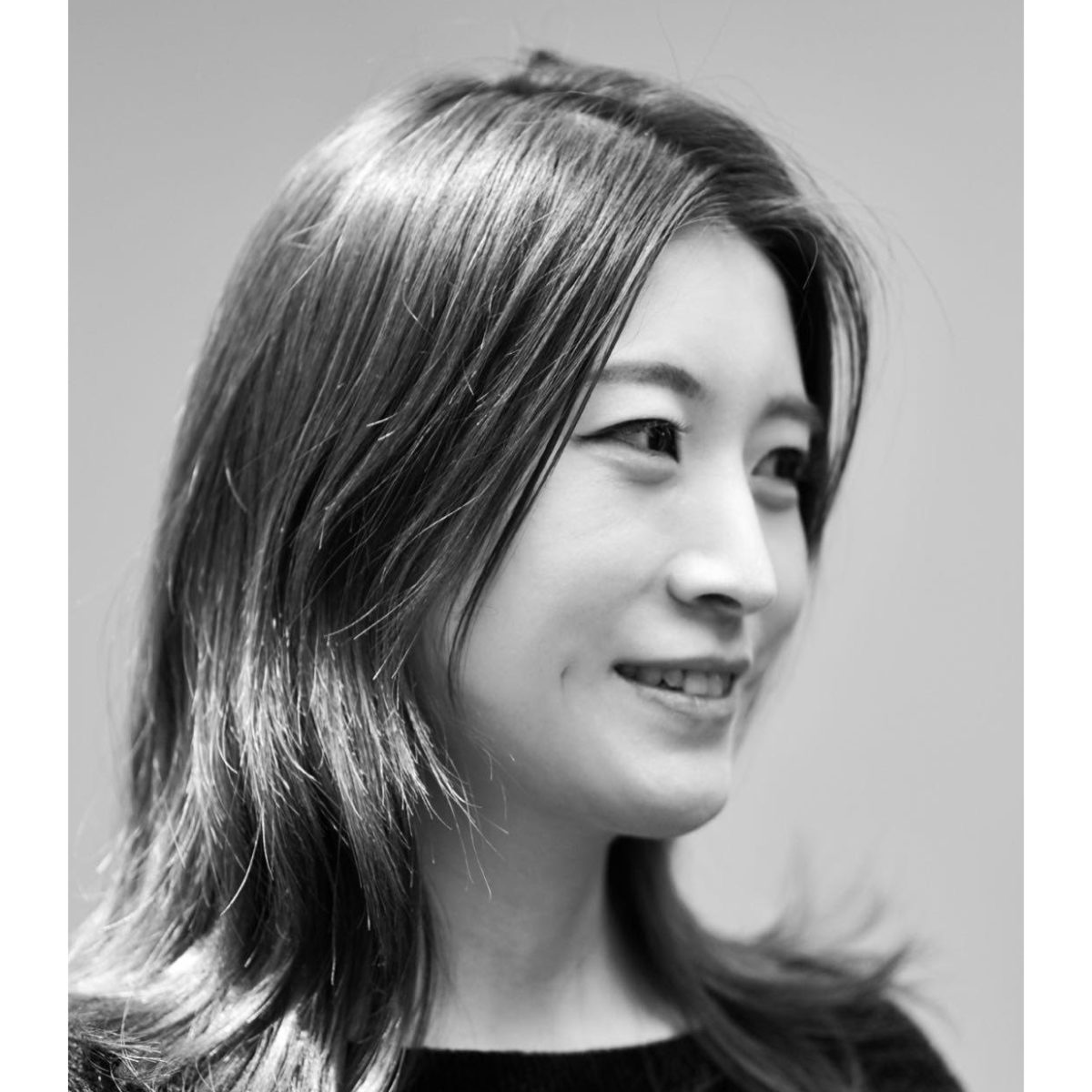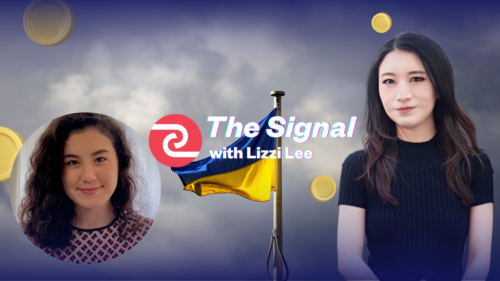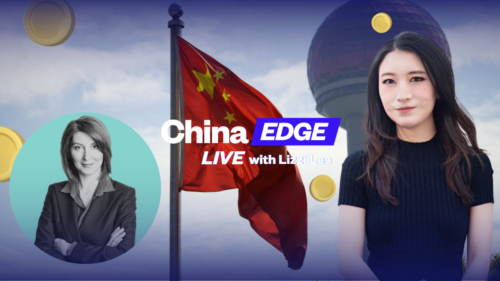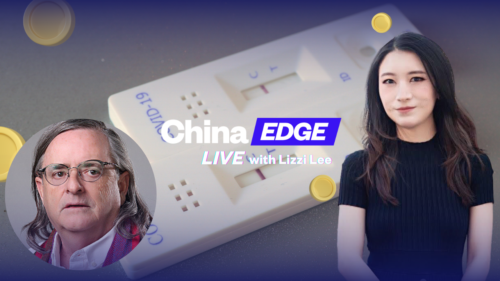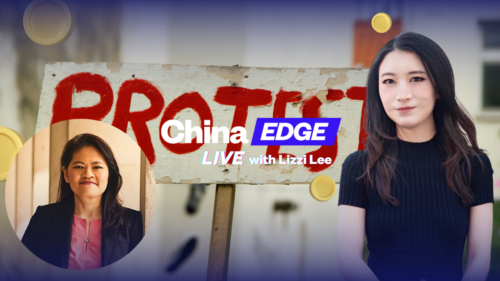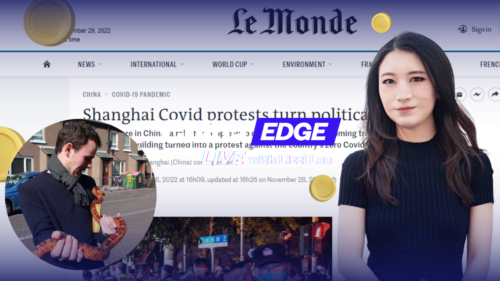The money behind China’s non-state, nationalist media diet | Live with Lizzi Lee
Kecheng Fang, an assistant professor at the School of Journalism and Communication, Chinese University of Hong Kong, talks about the often for-profit enterprises churning out nationalistic media content that Chinese people are consuming.

In this episode of Live with Lizzi Lee:
Kecheng Fang (方可成 Fāng Kěchéng), an assistant professor at the School of Journalism and Communication, the Chinese University of Hong Kong, talks about his research on the so-called zìméitǐ (自媒体), or self-media.
Below is a transcript of the video:
Lizzi: Joining me today is Professor Kecheng Fang (方可成 Fāng Kěchéng), an assistant professor in the School of Journalism and Communication at the Chinese University of Hong Kong. Thank you so much, Professor Fang, for being here with me.
Kecheng: And thank you for having me here.
Lizzi: So, Professor Fang, can you please tell us a little more about the media diet of a typical Chinese these days? What percentage of Chinese people would you say obtain information mostly from institutional media, zìméitǐ (自媒体 “we media or self-media”) or other means, say word of mouth or from friends and relatives?
Kecheng: That’s a great question. I hope I can give you a number. Unfortunately, such numbers are not available. I sincerely hope there will be some big data studies on this, so we can only use our estimation now because the data is not available.
My estimation is that maybe zimeiti, those so-called non-institutional news content accounts for more than half or maybe even more than 80% of Chinese people’s media diet.
I think there are several reasons behind that.
One is that the percentage of mobile access to the internet is really high in China. According to the latest statistic, a report on China’s Internet development, 99.6% of Chinese netizens will use their mobile phones to access the internet. That’s compared with desktop Internet, which only has around 60% of usage, which means that if we look at how people use mobile phones and desktop Internet, it would be very, very different, because on mobile phones the ecosystem is dominated by apps. It’s very rare that people will use the browser on their mobile phones to get new information. Mostly they get information through the apps, like Toutiao, Weibo, or TikTok (Douyin). I think that for most of Chinese people the media diet right now comes from these kinds of super apps. And in those super apps, I think that more than half or maybe even 90% of the traffic will be directed to those kind of institutional, zimeiti account. So that’s a reason why I estimate that.
Another reason is that before the time of social media, I think Chinese people’s media diet used to be dominated by institutional media because there was basically a licensing system which required that only state-owned organizations could produce news content. However, this changed after social media, because on social media platforms, everyone can register an account to publish their content.
I guess in the institutional media era, Chinese people were kind of underserved by news content, and they crave more. But nowadays, with social media platforms, they could get a huge amount of information.
And the majority of the suppliers in this market are actually those zimeiti accounts, which are not institutional, or state-owned. They are individuals or mostly for-profit companies. I guess that’s one point that we should consider if we look at the situation in China. Because institutional media are highly, highly controlled, so they have limited capacity to produce enough content.
Lizzi: That’s fascinating. I wonder if you can tell me a little more about the business model of zimeiti. What’s their cost structure? What’s their revenue channel? How is investment structured? And what are their incentives to publish a certain kind of content to their audience?
Kecheng: Actually, the business model is quite simple. It’s also part of the so-called attention economy, which is a prevalent model of social media platforms around the world.
As I said, Chinese people were underserved by institutional media before the social media era.
And with the development of social media and super apps like WeChat and Toutiao, those platforms need content to attract audience, to attract users.
So how do they find the content? They would use different schemes to encourage individuals and small companies to produce content.
And of course, those content, if they really want to make money on those platforms, the cost of producing such content should be as low as possible and the profit should be as high as possible.
This means that these kinds of zimeiti accounts are incentivized to produce and promote more sensational content, content that can attract more clicks, more viewers, so that they have more opportunities to show advertisements to their audience so they can earn a share of the advertising revenue of their platforms.
So, at its core, this business model is very, very simple. But if we consider the Chinese context, one specific difference is that, of course, is content censorship, political censorship in China. Not every kind of viral content could be allowed to be published on Chinese social media.
A natural consequence is that we increasingly are seeing that those zimeiti accounts and individuals and companies, many of them rely on highly nationalistic content because nationalism is sweet spot, which is both politically safe and commercially very profitable. I think that’s a unique consequence of this kind of universal attention economy model.
Lizzi: And since you mentioned, is there good data on how has zimeiti changed the contemporary Chinese’s outlook of China versus the world? Does the kind of nationalistic content, as you mentioned, have real-world consequences on Chinese people’s views?
Kecheng: Hmm. Again, the problem is that we don’t have very good quantitative data to support any generalizable claims.
But from my observation and estimation, I think that zimeiti’s especially highly nationalistic content, really has an influence on Chinese people’s attitudes toward China and towards other countries in the world. Especially rampant disinformation about international affairs is encouraged, and people are incentivized to produce more.
This kind of more sensational content also must be politically safe. So, many kinds of imported rumors and disinformation about international affairs from outside the Chinese Internet are there.
They really circulate a lot those kind of disinformation about the U.S., U.K., European countries and other countries. Based on our observation, for example, the young generation in China, tend to be more nationalistic than the older generations.
I think one of the reasons is that on the platforms, on social media platforms, those young people’s media diet is basically dominated by these kinds of zimeiti accounts.
And in comparison, for people like me born in the 1980s, we use to read a lot of institutional media. Many of us still read a lot of the institutional media.
I think the consequence is that people older than or at a similar age as me actually are influenced by zimeiti maybe to a lesser extent as compared with young people these days.
Lizzi: Fascinating. In a recent piece of research, you develop this push-and-pull model, which I find super interesting. Can you talk a little more about that? How is zimeiti different from what we call for-profit private western media outlets?
Kecheng: The idea is quite simple. Push-and-pull refers to different forces that change the media’s orientation, towards more activist, for social justice kind of direction, more liberal direction, or toward, for example, depoliticized direction, nationalistic direction, directions that comply with the government propaganda.
So, there are two directions. Then which direction does the media go? Push refers to those outside forces, for example, political forces and commercial forces like that.
And in China of course the political forces are trying to push both institutional media and zimeti toward a direction that is either depoliticized or complying with the state propaganda.
However, the difference is that there’s also a group of professionals who are working at a group of commercialized institutional media in China.
They try to pull news media in China toward a direction that is more liberal, more critical to our government and promotes social justice.
For example, I used to work for a newspaper called Southern Weekly. Other media outlets like Caijing, Caixin — this kind of institutional media, although they are state-owned, they sometimes publish quite liberal and critical reporting.
That is mainly because there is a group of professionals who work there. They try to pull the media toward that direction.
And the difference for zimei is that, although the outside pushes are the same, they lack a group of zimeiti practitioners who really want to pull its image into that more liberal, more critical direction.
Most of them, to be honest, only care about money. They only care about how much advertising revenue they get.
So they are helping the state to pull zimeiti into the depoliticized direction or the direction that is more complying with state propaganda.
Lizzi: Do you think those outlets posed any challenge to state censors? Do you worry that their nationalistic tone might go too far even for the state?
Kecheng: Yes and no. Yeah, we do see cases from time to time that really goes too far. Basically, too nationalistic, too hawkish. Some liberal critical content may be published on some platforms. For example, yesterday and today, there is an article going viral on WeChat, which is an article about a lawyer. I guess she sued the local government because of some unreasonable quarantine requirements. So that article went viral.
And of course, it is challenging the state’s COVID-zero policy and directly criticizing the local government for enforcing the quarantine policy which is conducted in a very unreasonable manner. So, this kind of post would appear from time to time.
For example, during the Shanghai lockdown, there was a very long post describing the horrible situation in the hospitals in Shanghai, and it described especially the terrible situation of old people right during that time.
And from time to time, we see these kinds of articles. So, to that extent, I do think that there is that kind of challenge to state censors. They must use a lot of human power and algorithms to censor this content as soon as possible.
However, on the other hand, I think that in general, zimeiti does not really pose that serious of a danger to state censors because, on the one hand, the platforms already have sophisticated techniques to identify this kind of post now.
And most of the zimeiti accounts, the individuals and especially the for-profit companies, they are already complying with state propaganda.
They are already willing to cooperate because they basically want to survive and to make money.
So I think that although there are cases of dissidents in general, zimeiti is quite tame, I would say, especially as compared with the more critical journalism in Southern Weekly, Caixin and Caijing about 15 years ago.
